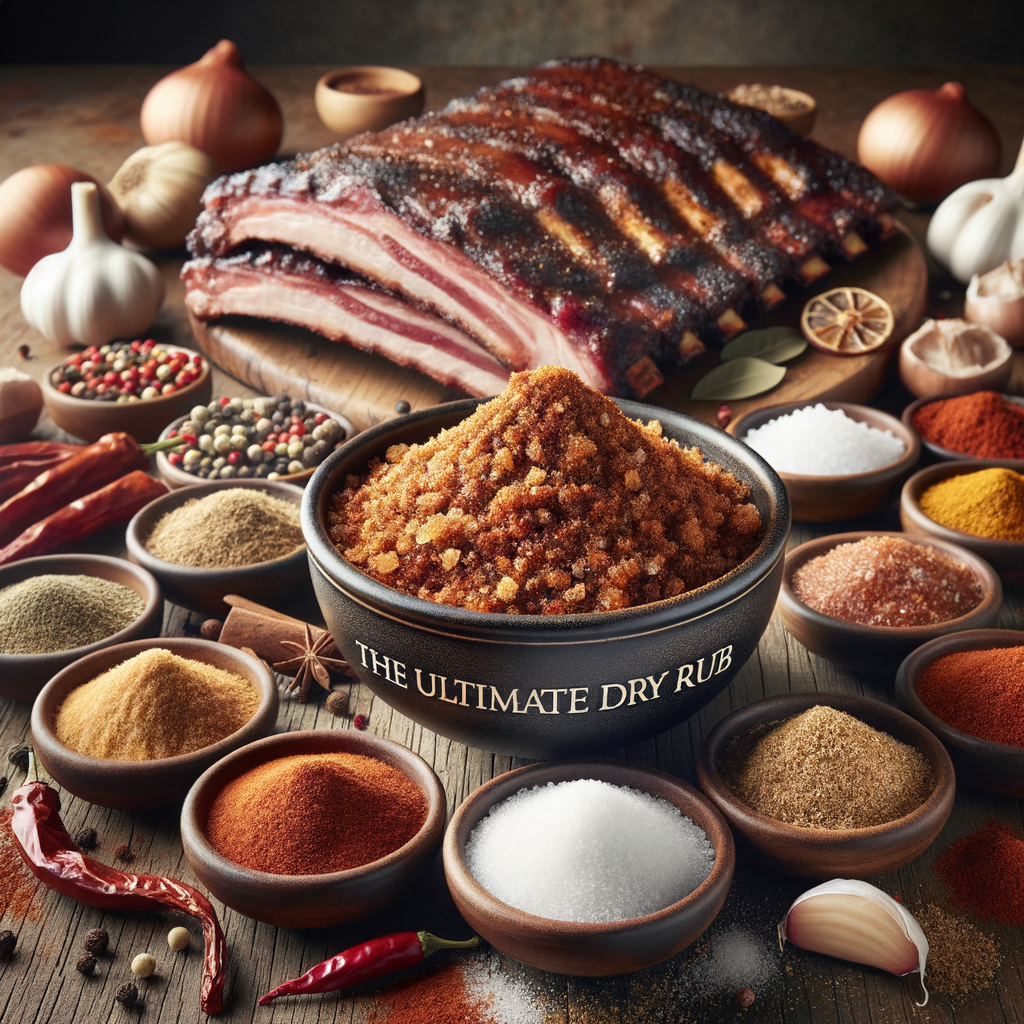The Ultimate Dry Rub for Ribs: A Culinary Revelation
 When it comes to preparing ribs that are both tantalizing and memorable, the secret often lies in the seasoning. The ultimate dry rub for ribs is not just a combination of spices; it’s a culinary craft that enhances the meat’s natural flavors while adding a complex layer of taste that makes each bite unforgettable. This guide is designed to unveil the secrets behind creating the perfect mix, ensuring your ribs are not only succulent but also packed with flavors that dance on your palate.
When it comes to preparing ribs that are both tantalizing and memorable, the secret often lies in the seasoning. The ultimate dry rub for ribs is not just a combination of spices; it’s a culinary craft that enhances the meat’s natural flavors while adding a complex layer of taste that makes each bite unforgettable. This guide is designed to unveil the secrets behind creating the perfect mix, ensuring your ribs are not only succulent but also packed with flavors that dance on your palate.
Understanding the Basics of a Dry Rub
Dry rubs are mixtures of dry spices and herbs that are rubbed onto the surface of meat before cooking. Unlike marinades, dry rubs do not contain any wet ingredients, which allows them to create a delicious crust on the meat’s surface as it cooks. The primary goal of a dry rub is to enhance the natural flavors of the meat without overwhelming it, providing a balanced, aromatic, and savory profile that complements the meat’s texture and taste.
The Components of the Ultimate Dry Rub for Ribs
Creating the ultimate dry rub for ribs involves a balance of flavors that cater to the four basic taste profiles: sweet, salty, spicy, and umami. Each component plays a critical role in building a multi-dimensional flavor profile that elevates the ribs from good to extraordinary.
Sweet
The sweet elements in a dry rub can come from various sources, such as brown sugar, white sugar, or even more exotic sugars like turbinado or demerara. The sweetness helps to balance the heat from the spices and creates a beautiful caramelized crust on the ribs as they cook.
Salty
Salt is a crucial component of any rub, enhancing the meat’s natural flavors and ensuring they stand out. Kosher salt is often preferred by chefs for its pure taste and ability to dissolve easily.
Spicy
The level of heat in a rub can be adjusted according to personal preference. Ingredients like cayenne pepper, black pepper, chili powder, and paprika can add warmth and depth, making the ribs moreish and exciting.
Umami
Umami, or the savory taste, is an essential aspect of a well-rounded rub. Ingredients like garlic powder, onion powder, smoked paprika, and even a touch of ground coffee can enrich the rub with a deep, savory flavor that complements the natural taste of the ribs.
Experimenting with Additional Flavors
While the basics of sweet, salty, spicy, and umami are fundamental to the ultimate dry rub for ribs, don’t be afraid to experiment with additional flavors. Herbs like thyme, oregano, and rosemary can introduce a freshness to the rub, while spices like cumin, coriander, and mustard powder can add complexity and warmth. The key is to balance these additional flavors so that no single ingredient overwhelms the others.
The Art of Applying the Dry Rub
The technique used to apply the dry rub is just as important as the ingredients themselves. For the best results, follow these steps:
– Preparation: Begin by ensuring your ribs are clean and dry. Remove the membrane from the back of the ribs to allow the rub to penetrate more deeply.
– Application: Generously apply the dry rub to both sides of the ribs. Use your hands to massage the rub into the meat, ensuring it’s evenly coated. For the best flavor, wrap the ribs in plastic wrap and refrigerate for at least an hour, or overnight if possible.
– Cooking: When cooking ribs, low and slow is the way to go. Whether you’re using a grill, smoker, or oven, cooking the ribs at a low temperature for several hours will ensure they are tender and full of flavor. The dry rub will form a delicious crust on the outside of the ribs, sealing in the juices and making every bite a delight.
Customizing Your Rub: The Key to Signature Flavors
While there are countless recipes for the ultimate dry rub for ribs, the best rub is the one that suits your personal taste. Experimenting with different ratios of the core components and introducing new flavors can lead to the discovery of a signature rub that sets your ribs apart. Remember, the best rubs often come from trial and error, so don’t be afraid to adjust and refine


